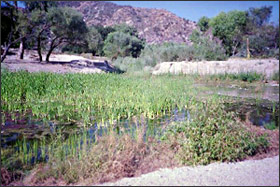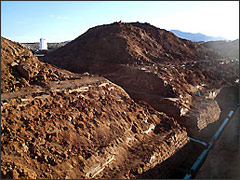Contact EPA Pacific Southwest Water Division
Pacific Southwest, Region 9
Serving: Arizona, California, Hawaii, Nevada, Pacific Islands, Tribal Nations
Wetlands of the Pacific Southwest
| Wetlands Quick Finder | |||
|---|---|---|---|
| Wetlands homeGrants | Permit ReviewRegional Wetlands | Regulatory/EnforcementResources & Partners | MudflatsVegetated Shallows |
Enforcement Actions Protect Wetlands

The Clean Water Act’s Section 404 has protected wetlands nationwide for more than 30 years. In the Pacific Southwest, a variety of wetland types provide essential food, habitat, and migration corridors for hundreds of species of wildlife, fish, and plants, as well as filtering pollutants and preventing floods by storing and transporting runoff and snowmelt.
The law prohibits discharge of dredged or fill material into waters and adjacent wetlands without a permit, issued by the U.S. Army Corps of Engineers, that includes conditions to minimize environmental impacts. EPA reviews the permits and takes enforcement action against those who have failed to get a permit.
EPA’s enforcement goals are to restore illegally filled waters and wetlands, and deter future violations. Over the past year, EPA has taken enforcement actions to protect waters and wetlands in all four states of the Pacific Southwest – Arizona, California, Hawaii, and Nevada. Here are examples from each of these states.


- In Arizona, EPA halted unauthorized construction in natural waterways in the San Pedro River watershed near Benson. To settle this enforcement action, Tucson’s Whetstone Development Corp. and contractor K.E.& G. Development donated a 40-acre parcel with 2.5 acres of desert wash riparian habitat to the city of Benson. The developers also paid penalties totaling $110,000.
- In California, EPA in February 2006 ordered the owner of a Southern California trailer park and campground to restore over two acres of the Santa Clara River and adjacent wetlands the landowner had filled, cleared, and graded. These alterations diverted the river’s natural flow, damaged fish and wildlife habitats, and increased potential stream bank erosion. The Santa Clara River is one of the last free-flowing rivers in Southern California, and provides habitat for an endangered fish, the Unarmored Threespine Stickleback.
- In Hawaii, EPA ordered Coluccio Construction Co. and landowner Kaneohe Ranch Co. to remove illegal fill and restore sensitive wetlands adjacent to Hamakua Stream in Kailua, Oahu. Colluccio, under an agreement with the landowner, filled the area to use as a storage site for construction equipment and stockpiles of excavated soil and rock. EPA’s action requires Coluccio to restore the site and monitor the recovery of these wetlands annually from 2007 through 2011.
- In Nevada, EPA ordered KB Home to halt construction on a 160-acre development site in southwestern Las Vegas. The unpermitted work had resulted in the filling of tributaries of Las Vegas Wash. To settle the violations, KB Home Nevada, Inc. agreed to pay $193,000 for riparian restoration work at the Bureau of Land Management’s Red Rock Canyon National Conservation Area, plus an $80,000 penalty. The restoration projects include fencing desert springs to keep livestock from trampling and fouling the water, and removing thirsty, invasive tamarisk (also known as salt cedar) trees and other invasive plants.
